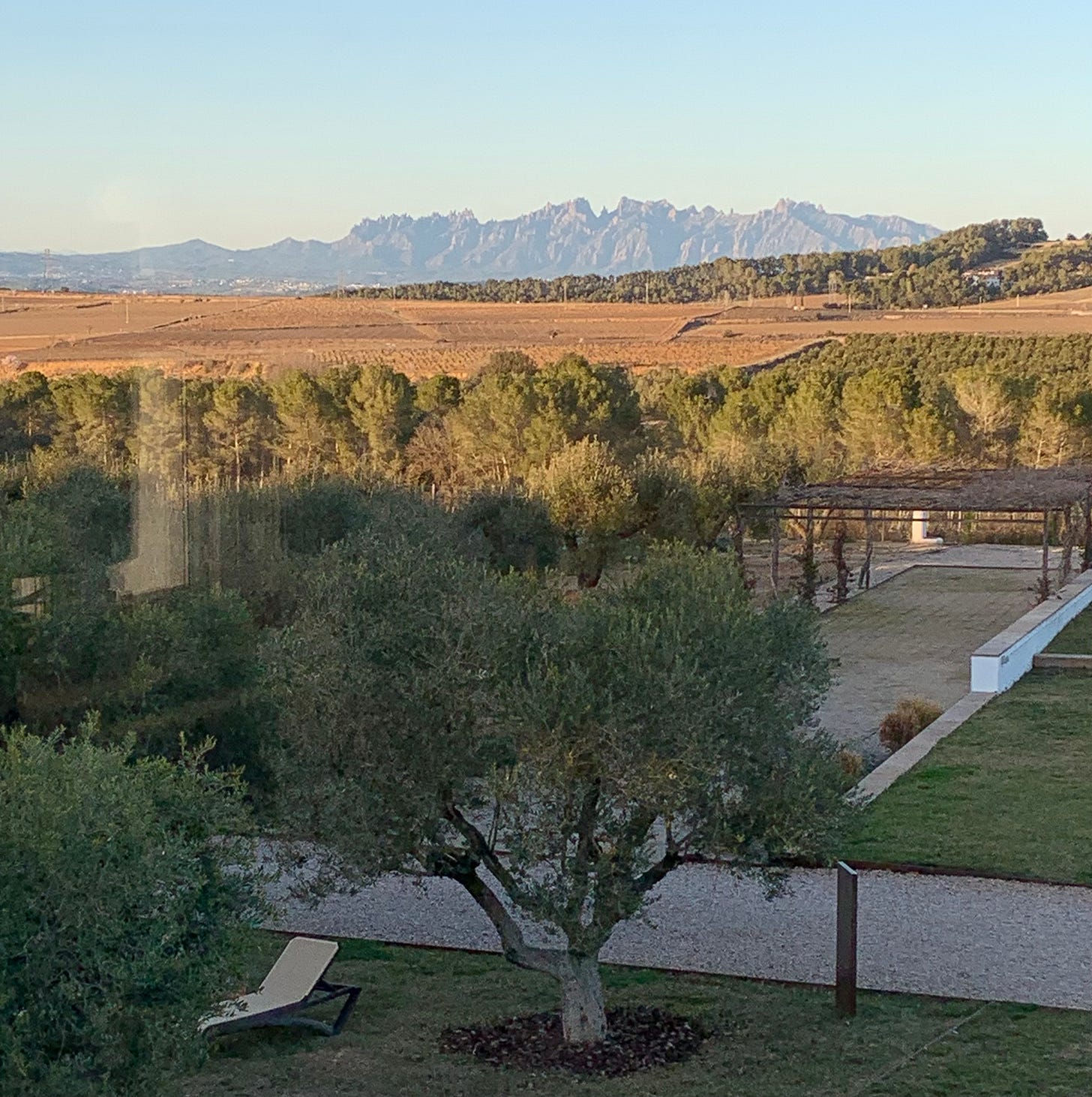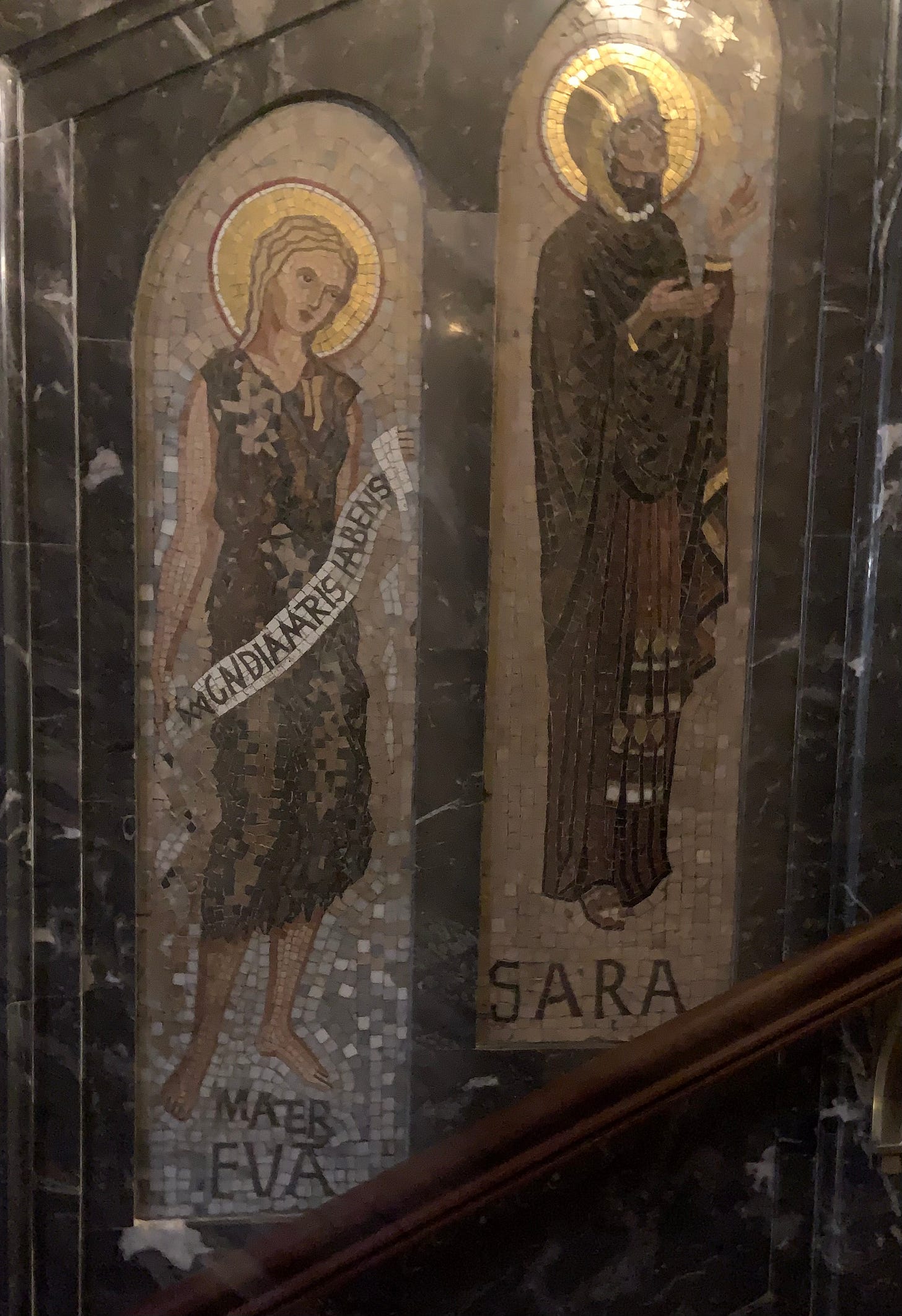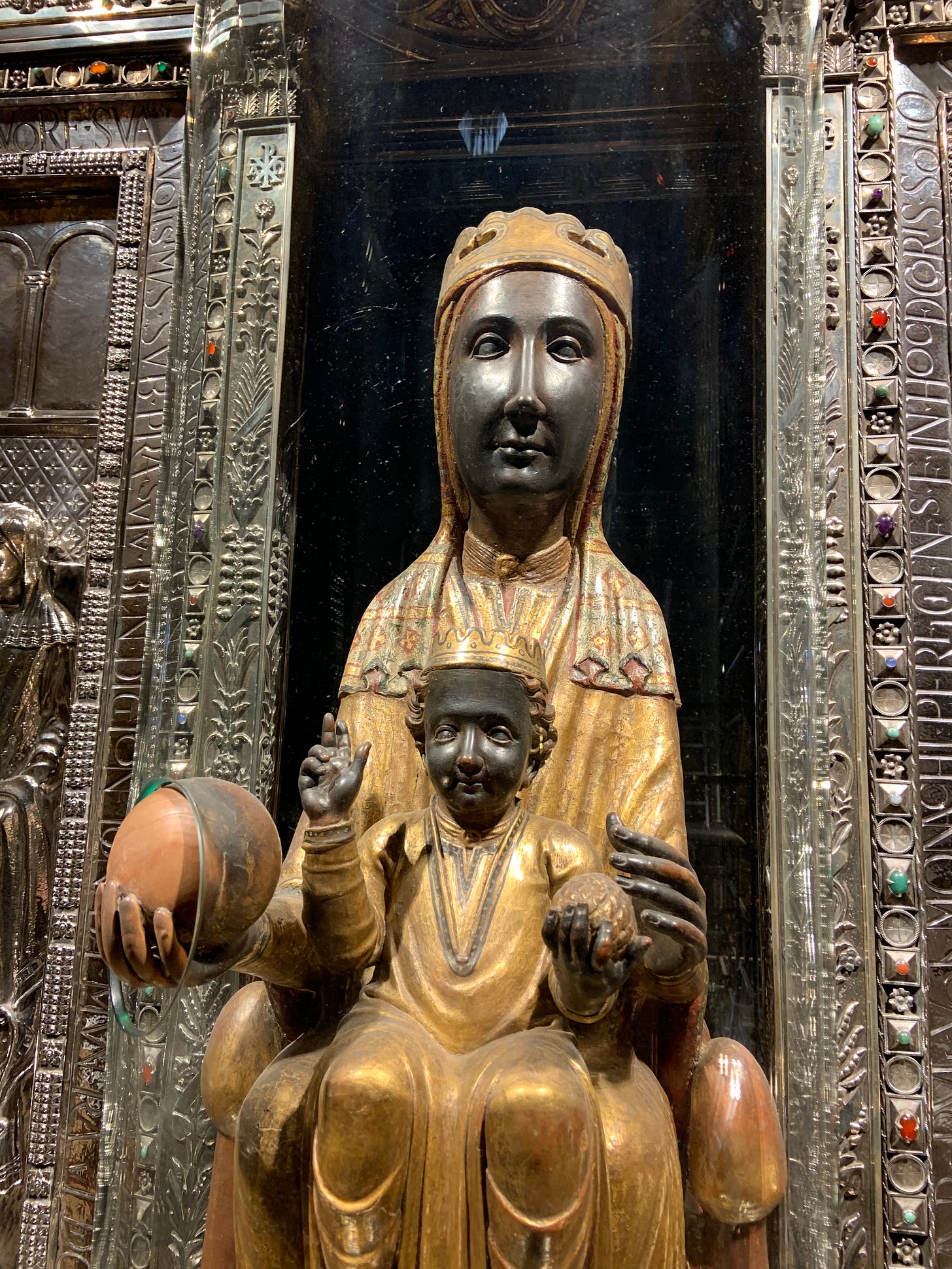I began my visit to the shrine of the Black Madonna of Monserrat without any great expectations, but rather a sense of curiosity. I’d recently read Perdita Finn and Clark Strand’s The Way of the Rose: The Radical Path of the Divine Feminine Hidden in the Rosary1, hoping it would help me make sense of my own mother’s recent death2, and my subsequent longing for a way into the sacred feminine. Reminded of their peregrinations around southwestern France locating Marion shrines, I realised that by happenstance, I was staying just an hour’s drive from a very famous one; their book give happenstances a high score.
It helped that the shrine of Our Lady of Monserrat is part of the monastery perched high in the iconic mountain range; I’ve never needed a second reason to go into the mountains. I find it ironic that so many people long to live by the sea, to hear it whispering in the background of their day, as I have done for the last year, whereas for me, it’s always been mountains that activate my heart’s trap door of awe; indeed, if I spent too much time at sea level, I start to feel ‘low’.
Like everything else in the modern world it seems, we had to buy a timed ticket and queue, gradually progressing up a staircase of dark marble, the walls panelled with mosaic portraits of female saints, including ‘Mater Eva’ (in a surprisingly modern knee-length sequinned shift dress), followed by Sta Perpetua and Sta Felicitas3 (a mistress and slave, both martyred in 3rd-century Carthage for their Christian beliefs) and more. As we ascended, the way became narrower and the crowd quietened; what had begun as a snake of tourists hushed into a line of pilgrims.
The final approach to the shrine of ‘La Moreneta’4 (the dear little dark one, in Catalan) is a cramped set of steep marble steps, tunnelling up through the high heart of the basilica and hardly wide enough for two people; it’s only when I reached the top and saw the nave of the basilica spread out below me that that I realised Her shrine sits directly above the alter.
The statue was smaller than I was expecting, just a few feet high, but She made up for that by the strength of her presence. I’d never been to a shrine before, so I wasn’t sure of the protocol, yet I found myself touching the cheap ‘medallion’ that was handed out with my entry ticket to the orb that sits in her outstretched hand; never before a pilgrim, I instinctively sought her blessing.
I felt confused, out of time and out of myself. I sensed emotions that felt too big to put names to, inchoate in the raw power of her presence. I took a rather mediocre photo, aware of the press of people waiting behind me, and, feeling rather speechless, went back down the stairs and into the basilica. I looked up at Her from below and smiled to see that here, right at the very heart of this patriarchal institution, perched atop a tumescent mountain range, the sacred feminine sits at the core. I felt deeply reassured.
Looking at my photo now, I can see how the touch of so many hands and lips through the glass have worn her hand to a pinkish colour. I’ve read varying accounts of her ‘blackness’ - from the feminist medieval scholar Lucia Chiavora Birnbaun5, who claims that she was intentionally painted black as she formed part of a tradition of Black Madonnas, which in Italy are located ‘over or near pagan sites of workshop of the Great Mother.’6 to the tourist website’s more prosaic explanation that it’s simply that the varnish has darkened with age7. Yet the same website will also state that this medieval sculpture was ‘carved in Jerusalem at the beginning of the religion.’
It seems the Black Madonna is a container for ambiguity, as well as grace.
Coming home just three days after meeting the Black Madonna we found that my partner’s robustly healthy ninety-three year old mother, with whom we share a home, was gravely ill and, after one night in hospital, she was given just a few weeks to live. She’s home with us again and, as I type this, I can hear both the soft hiss of the Atlantic and her gentle, but increasingly raggedy breathing. Her passing is breaking my heart, but I also feel so honoured to be part of it, holding vigil as she prepares with quiet dignity to make her final trip.
And I can feel the Black Madonna with me still in this numinous, luminous, time-out-of-time. I may not have had the honour of birthing in this lifetime, but once again it seems, I have the honour of companioning death; I just didn’t expect it again so soon. I guess we never do.
Strand, C. and Finn, P. (2019). The Way of the Rose: The Radical Path of the Divine Feminine Hidden in the Rosary. London/New York: Penguin Random House.
Jody Day (November 2023) A Parting Gift. Substack essay
Chiavola Birnbaum, Lucia (2000). Black Madonnas: Feminism, Religion, and Politics in Italy. 2nd ed, 2000: iUniverse.
Adele La Barre Starensier, Department of Art History, Drew University. Quoted in a review of Chiavola Birnbaum, Lucia (1993) Black Madonnas: Feminism, Religion, and Politics in Italy. Boston: Northeasten University Press, in ‘Medieval Feminist Newsletter’: Issues 18-24, 1994. University of California.
Tourist Guide to Monserrat. https://www.montserrat-tourist-guide.com/en/attractions/black-madonna-montserrat-spain.html







So beautiful in so many ways. Grateful that you shared your pilgrimage with us--I love those experiences and hearing about them in others. Mothering through death is very real and is a much more needed practice, awareness, recognition than the current world wants to ever give it. 💜
All of this feels very precious